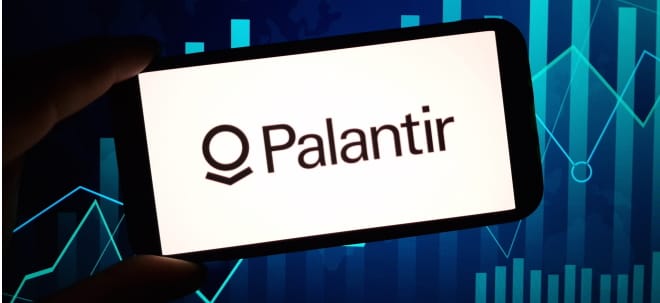Reparaturanleitung zum Blaster Wurm
Obtaining and running the tool
NOTE: You need administrative rights to run this tool on Windows 2000, or Windows XP.
1.§Download the FixBlast.exe file from:
http://securityresponse.symantec.com/avcenter/FixBlast.exe
2.§Save the file to a convenient location, such as your downloads folder or the Windows Desktop (or removable media that is known to be uninfected, if possible).
3.§To check the authenticity of the digital signature, refer to the section, "Digital signature."
4.§Close all the running programs before running the tool.
5.§If you are running Windows XP, then disable System Restore. Refer to the section, "System Restore option in Windows Me/XP," for additional details.
CAUTION: If you are running Windows XP, we strongly recommend that you do not skip this step. The removal procedure may be unsuccessful if Windows XP System Restore is not disabled, because Windows prevents outside programs from modifying System Restore.
6.§Double-click the FixBlast.exe file to start the removal tool.
7.§Click Start to begin the process, and then allow the tool to run.
NOTE: If, when running the tool, you see a message that the tool was not able to remove one or more files, run the tool in Safe mode. Shut down the computer, turn off the power, and wait 30 seconds. Restart the computer in Safe mode and run the tool again. All the Windows 32-bit operating systems, except Windows NT, can be restarted in Safe mode. For instructions, read the document "How to start the computer in Safe Mode."
8.§Restart the computer.
9.§Run the removal tool again to ensure that the system is clean.
10.§If you are running Windows XP, then re-enable System Restore.
11.§Run LiveUpdate to make sure that you are using the most current virus definitions.
When the tool has finished running, you will see a message indicating whether W32.Blaster.Worm infected the computer. In the case of a worm removal, the program displays the following results:
•§Total number of the scanned files
•§Number of deleted files
•§Number of terminated viral processes
•§Number of fixed registry entries
Digital signature
FixBlast.exe is digitally signed. Symantec recommends that you only use copies of FixBlast.exe that have been directly downloaded from the Symantec Security Response Web site. To check the authenticity of the digital signature, follow these steps:
1.§Go to http://www.wmsoftware.com/free.htm .
2.§Download and save the Chktrust.exe file to the same folder where you saved FixBlast.exe (for example, C:\Downloads).
3.§Depending on your operating system, do one of the following:
•§Click Start, point to Programs, and then click MS-DOS Prompt.
•§Click Start, point to Programs, click Accessories, and then click Command Prompt.
4.§Change to the folder where FixBlast.exe and Chktrust.exe are stored, and then type:
chktrust -i FixBlast.exe
For example, if you saved the file to the C:\Downloads folder, you would enter the following commands:
cd\
cd downloads
chktrust -i FixBlast.exe
Press Enter after typing each command. If the digital signature is valid, you will see the following:
Do you want to install and run "W32.Blaster.Worm Removal Tool" signed on 8/11/2003 7:14 PM and distributed by Symantec Corporation?
NOTES:
•§The date and time displayed in this dialog box will be adjusted to your time zone if your computer is not set to the Pacific time zone.
•§If you are using Daylight Saving time, the displayed time will be exactly one hour earlier.
•§If this dialog box does not appear, there are two possible reasons:
•§The tool is not from Symantec. Unless you are sure that the tool is legitimate and that you downloaded it from the legitimate Symantec Web site, do not run it.
•§The tool is from Symantec and is legitimate, however, your operating system was previously instructed to always trust content from Symantec. For information on this and how to view the confirmation dialog again, read the document "How to restore the Publisher Authenticity confirmation dialog box."
5.§Click Yes to close the dialog box.
6.§Type Exit, and then press Enter. This will close the MS-DOS session.
System Restore option in Windows Me/XP
Users of Windows Me and Windows XP should temporarily turn off System Restore. Windows Me/XP uses this feature, which is enabled by default, to restore the files on your computer in case they become damaged. If a virus, worm, or Trojan infects a computer, System Restore may back up the virus, worm, or Trojan on the computer.
Windows prevents outside programs, including antivirus programs, from modifying System Restore. Therefore, antivirus programs or tools cannot remove threats in the System Restore folder. As a result, System Restore has the potential of restoring an infected file on your computer, even after you have cleaned the infected files from all the other locations.
Also, in some cases, online scanners may detect a threat in the System Restore folder even though you scanned your computer with an antivirus program and did not find any infected files.
For instructions on how to turn off System Restore, read your Windows documentation, or one of the following articles:
•§How to disable or enable Windows Me System Restore.
•§How to turn off or turn on Windows XP System Restore.
For additional information and an alternative to disabling Windows Me System Restore, read the Microsoft Knowledge Base article, "Antivirus Tools Cannot Clean Infected Files in the _Restore Folder (Q263455)."
How to run the tool from a floppy disk
1.§Insert the floppy disk, which contains the FixBlast.exe file, in the floppy disk drive.
2.§Click Start, and then click Run.
3.§Type the following:
a:\FixBlast.exe
and then click OK:
NOTES:
•§There are no spaces in the command, a:\FixBlast.exe.
•§If you are using Windows Me and System Restore remains enabled, you will see a warning message. You can choose to run the removal tool with the System Restore option enabled or exit the removal tool.
4.§Click Start to begin the process, and then allow the tool to run.
5.§If you are using Windows Me, then re-enable System Restore.
www |


 Thread abonnieren
Thread abonnieren

